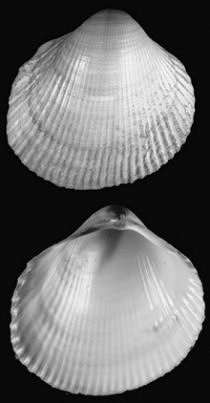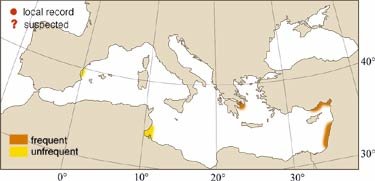
|
Relevant Synonyms
Misidentification
|
|
| photo: S. Gofas / Coll. E. Verdala-Theodorou |
|
SHORT
DESCRIPTION
color :
externally whitish, beige, to yellow with a purple stain only on the umbo. Internally white with purple at the posterior third and sometimes at the umbonal cavity.
common size :
to 75 mm in height. |
DISTINGUISHING CHARACTERISTICS
BIOLOGY / ECOLOGY
habitat :
littoral to shallow waters; dredged from 9-37 m sandy, sandy muddy and muddy bottoms; also on sandy bottoms with Zostera sp. |
|
1st
Mediterranean record
|

|
|
DISTRIBUTION
|
ESTABLISHMENT SUCCESS
speculated reasons for success :
|
|
|
MODE OF
INTRODUCTION |
IMPORTANCE TO
HUMANS |
|
KEY
REFERENCES
|
|
|
 Cardium fragile Forsskål in Niehbur, 1775
Cardium fragile Forsskål in Niehbur, 1775